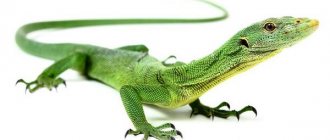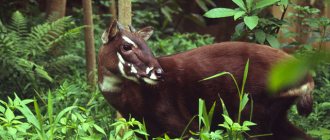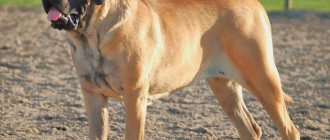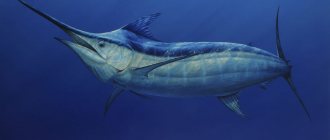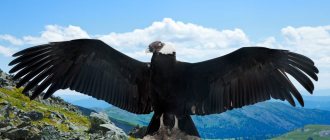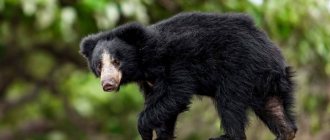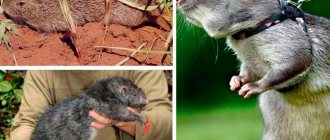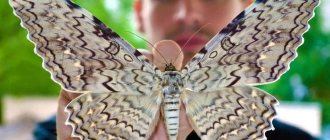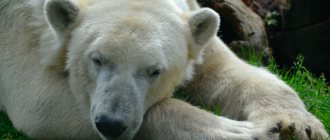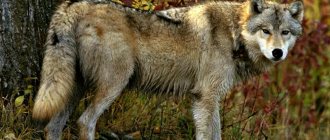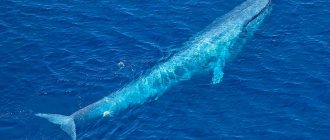Lizards have existed on planet Earth for several million already. They have perfectly adapted to constantly changing environmental conditions, so now you can find this type of living beings in every corner of the globe, with the exception of Antarctica.
There are about 10 thousand species of lizards, from the smallest to the very large. Most often they have 4 legs, but some are more like snakes. Larger creatures are carnivores, while smaller ones feed primarily on insects.
We present to you the 10 largest lizards in the world.
Arizona snaketooth, 2kg
This type is also called “ vest ”. There are only two poisonous lizards on Earth, and the Arizona lizard is one of them. It is found in the Chihuahuan, Mojave, and Sonoran deserts of northwestern Mexico and the southwestern United States.
Most often, these lizards are dark brown in color with various spots of yellow, pink and orange. An adult reaches 50-60 centimeters in length.
Thanks to the large tail, in which the lizard stores fat reserves, the echinoderm can go without feeding for several months. This is all because they spend most of their lives in underground burrows (about 95%), only emerging to search for food.
The bite of the Arizona serpentine tooth is very poisonous, which can even lead to death.
Birth of the Dragon
Many interesting facts about lizards are associated with the continuation of the species. After a bloody fight, which often ends with the death of one of the fighters, the winner receives the right to start a family. These animals do not form permanent families; in a year the ritual will be repeated.
The winner's chosen one lays about two dozen eggs. She guards the clutch for about eight months so that small predators or even close relatives do not steal the eggs. But from birth, dragon children are deprived of maternal affection. Having hatched, they find themselves face to face with the harsh island reality and at first survive only thanks to the ability to hide.
Bengal monitor, 7 kg
The species also has another name – “ common Indian ”, which is not accidental. Varan lives in India and Pakistan. The lizard can often be found in forests, gardens and plantations, often close to humans, as it prefers dry areas.
However, if necessary, it can remain in the water for a long time. Despite its large size (about 175 cm in length), the lizard runs and jumps quite quickly.
Adults can have different colors - from yellow to brown and gray. Sometimes there are barely noticeable dark spots. They live in holes under trees or stones, but can also live in hollows, since the monitor lizard climbs trees well.
It feeds mainly on small rodents, as well as birds and their eggs, snakes and crocodiles.
Relationships with a person
This largest lizard tries to avoid meeting people. In recent years, only a few documented attacks of Komodo dragons on humans have been documented. Moreover, most often the victims were children. Most likely, these cases can be explained by the hunger of the reptiles, and the settlements that have grown on the Indonesian islands attracted the monitor lizards with the appetizing smell of fish.
However, residents are prohibited from killing them, as Komodo dragons are protected. The Indonesians can only catch the predator and move it to another part of the island. Their capture is permitted only with the personal permission of the President of Indonesia and can only be carried out for the purpose of transporting them to zoos or as a gift to another nation.
The free sale of Komodo dragons is prohibited by law. However, despite this, they are traded, albeit illegally. It is not known how many owners of these animals there are in the world, but it is clear that they had to pay a lot of money for this pet.
Despite all its aggressiveness and mortal danger to humans, the Komodo dragon in captivity easily gets used to people, especially to those who pay them a lot of attention. Thus, zookeepers are often faced with the fact that these giants develop unexpected pet habits: they recognize the person caring for them, meet him and follow him around, respond to their nickname, eat from their hands. Some individuals can even “play” with people.
It is known that one Komodo dragon, who lived in the Washington Zoological Park, pulled workers' shoelaces, pulled contents out of their pockets, and even competed in tug-of-war. Of course, such behavior is promoted only by a kind attitude towards them. Oddly enough, monitor lizards love to be stroked, caressed, and talked to .
Argentine black and white tegu, 8 kg
This species of lizard is also called the “ giant tegu ”, and it is the largest of this genus. Individuals can be seen in Central and South America (savannas, deserts and tropical forests of this region). The size of the Argentine lizard is rather large - 120-140 centimeters in length.
During the breeding season, tegus regulate their body temperature, which is rare for lizards. The color of adult males is quite bright - a white body with black spots. But, despite their size, black and white creatures have the ability to quickly gain speed while running short distances.
The giant tegu is omnivorous. It feeds mainly on invertebrates and insects.
Classification of reptiles
According to the traditional scientific classification, the class Reptiles (Reptiles) includes four modern orders:
- Testudines - Turtles;
- Crocodilia - Crocodiles;
- Rhynchocephalia - Beaked heads;
- Squamata - Scaly.
The last order (Scaly) is divided into suborders. Among them:
- Serpentes - Snakes;
- Amphisbaenia - Amphisbaenia (two-walkers);
- Lacertilia - Lizards;
- Chamaeleonia - Chameleons.
There are a lot of species of lizards.
More than 9 thousand species of animals belonging to the class of Reptiles are known in the world. More than 6 thousand of them are species classified in the suborder Lizards, which include:
- infraorder monitor lizards (Varanoidea);
- infraorder spindle-shaped (Anguimorpha);
- infraorder gecko-like (Gekkota);
- infraorder iguana (Iguania);
- infraorder skinks (Scincomorpha).
White-throated monitor lizard, 8 kg
The white-crested monitor lizard lives in Africa. Most often it can be observed in the southern, eastern and central parts of the continent.
This lizard is considered the largest in Africa. The average weight of females varies from 3 to 5 kilograms, and males - 6-8 kilograms. Sometimes the weight of an adult monitor lizard can exceed 15 kilograms.
The body color of the monitor lizard is unremarkable even for its size (from 1.5 to 2 meters in length) - brown-beige, sometimes there are spots of a similar color.
Lizards do not like water, so they are often found in trees or on the surface of the ground. When threatened, monitor lizards bite, whip, or even scratch. They feed mainly on mollusks, beetles, and bird eggs. But their favorite delicacy is snakes: snakes, vipers and cobras.
The largest lizard in the history of the Earth
Good day, dear readers.
Today's article is dedicated to ancient giant lizards, whose name is Megalania
.
Artistic drawing of ancient reptiles
These huge lizards lived in the territory of modern Australia, from 1.6 million to 40,000 years ago. They are distant relatives of modern monitor lizards, but their size was much more impressive.
Komodo dragon
The Komodo dragon is considered the largest lizard of our time. The body length of these reptiles reaches 3 meters and weight 80 kg. Giant monitor lizards are very dangerous predators; in addition, they have poisonous saliva and strong jaws, with which they can kill prey several times their own size.
Now that you have learned a little about the largest monitor lizards, I will continue the story about Megalania, and you will understand how superior these extinct lizards were to modern ones.
Reconstruction of the Megalania skeleton
At present, not a single skeleton of Megalania has been found that has been preserved in its entirety, so various scientists argue about the size of these reptiles. However, if we combine the results of their research, we get the following figures: the body length of megalania varied from 4.5 to 9 meters, and weight from 331 to 2000 kg.
Reconstruction of megalania, on the territory of one of the historical museums
Even if we take into account the most modest assumptions about the size of megalania, we see that they exceeded the body mass of Komodo dragons by 4 times. If they really reached a weight of 2 tons, then this is comparable to the size of modern saltwater crocodiles, only the ancient lizards were land animals and were able to move quite quickly.
Ancient lizard skull
Externally, megalania were similar to monitor lizards: they had a massive elongated body, a long tail and a large skull with many sharp teeth, reminiscent in structure of the teeth of dinosaurs.
Artistic drawing of a giant lizard during a hunt
As for the lifestyle and behavior of the ancient giants, in this too they were similar to monitor lizards. These predatory lizards lived in areas of small forests and grassy savannas.
They would ambush their prey and then suddenly jump out at it, delivering their fatal bite. Many researchers believe that their saliva was toxic like the saliva of Komodo dragons, but there is no evidence of this.
Large marsupial mammals and birds became victims of megalania; it is also assumed that they did not disdain carrion.
Megalania translates to "great ancient tramp"
The extinction of Megalania, like many other representatives of Australian megafauna, chronologically coincides with the appearance of the first people on this continent.
Coincidence? I don’t think, and many researchers agree, that the first people could exterminate these lizards, because they saw them as a threat.
Ancient legends of the indigenous aborigines tell of giant lizards, which is another confirmation of this theory. But until scientists find evidence, this will remain only one of the possible versions.
Reconstruction drawing
Many researchers believe that megalania could have survived to this day, living in remote areas of Australia and New Guinea. Cryptozoologist Rex Gilroy said that the discovery of these ancient reptiles is only a matter of time. But there has been no confirmation yet, and in general this is unlikely. But who knows…
I hope you liked the article? If the answer is yes, then be sure to subscribe.
to my channel and give it
a thumbs up
. Good luck to you and see you soon!
Source: https://zen.yandex.ru/media/id/5a705c4a1410c3b8a0f59099/5ac88d2aa936f403513e7bc1
Salvadora monitor lizard, 10 kg
This species also has another name - “ crocodile monitor lizard ”. Found only in New Guinea. Their peculiarity is that the tail of an adult individual occupies approximately two-thirds of the total body size. The length of the lizard is about 2 meters.
The Salvadoran monitor lizard is an arboreal lizard. A large tail is necessary for dexterous tree climbing. Sometimes it rises up on its hind legs to examine the surroundings.
The color is quite inconspicuous in the surrounding conditions - a brown body with bright yellow spots. It feeds on bird eggs and sometimes carrion. Cases of aggression against humans and livestock have been recorded. The crocodile monitor is in danger of extinction due to poaching and forest destruction.
Gyurza
The length of this representative of the genus of giant vipers can sometimes reach two meters; perhaps, this is the largest individual of the viper family. For living creatures, the largest snake in the Caucasus is considered the most dangerous. In terms of lethality, its venom can “lose” only to the venom of a cobra. Moreover, in order to protect itself, the viper is capable of making a throw equal to the length of its body directly at the offender. A viper's bite contains fifty milligrams of poison; after it enters the bloodstream, a person feels severe pain, dizziness and nausea. If help is not provided in time, death can occur in just a couple of hours.
You can meet viper and viper in the North Caucasus, Dagestan. The viper is a huge snake with a narrow neck and a wide body. It is distinguished by an ash-colored upperparts and a dotted gray belly. Gyurza loves to settle on freshly cultivated lands, calmly conquers trees, and her jump shocks the enemy.
Marine iguana, 12 kg
The species is also called the “ Galapagos iguana ” because of its habitat – the Galapagos Islands. The body size of an adult individual can reach 1.4 meters in length. Outwardly, it resembles a dragon from fairy tales - the color can be brown, green and even red.
Has large paws and dry skin. Spends most of its time in the sea, but can be found on rocky shores, near mango trees; it swims and dives well. They feed on seaweed. They reproduce by laying eggs on a warm sandy beach.
Threats
There is no data on the exact population size of these animals. At different times there are from 3000 to 5000 individuals. In addition, since 1992, approximately 55 Komodo dragons have been hatched and are living in zoos around the world.
According to the International Union for Conservation of Nature, the Komodo dragon is not endangered, but is considered vulnerable. There are several reasons for this: poaching, human encroachment into the monitor lizard's habitat (including agriculture and hunting of potential reptile prey), natural disasters, and a lack of egg laying by females.
Iguana Konolof, 13 kg
Conolophans are land iguanas. Their habitat, just like the previous individual, is the Galapagos Islands. The body size of an adult does not exceed 1.2 meters.
The crest of a land iguana is much smaller than that of a marine one. Also in the process of evolution, this species does not have membranes between the fingers, since they are not required on land.
The color of Konofol is very bright. Some parts of the body are yellow or orange, others are red or brown. Iguanas live in cool burrows, protecting themselves from overheating, especially in hot weather.
Due to the fact that the lizard lives mainly on Fernandina Island, it does not have the opportunity to lay offspring in wet sand. Therefore, females need to travel several kilometers (about 15 on average) to lay eggs in the crater of an extinct volcano.
Feeds on plant foods. A favorite delicacy is scaly cacti, which have a large number of spines.
Historical reference
These giants were first discovered in 1912 on Komodo Island. It’s easy to guess that this has something to do with the name of the large lizard.
Since then, these creatures have been the subject of scientific research. Scientists have found that the evolutionary history of this species is connected with Australia. The genus Varanus separated from its historical ancestor about 40 million years ago and emigrated to this distant continent. For some time, giants lived in Australia and nearby islands. Later, for various reasons, monitor lizards were pushed to the islands of Indonesia, where they settled. Scientists suggest that this is due to changes in topography and seismic activity. Komodo Island itself, by the way, is also of volcanic origin. It is worth noting that the resettlement of bloodthirsty giants to the islands saved many representatives of the Australian fauna from complete extermination. The large lizard has conquered new territories and dominates there to this day.
Giant monitor lizard, 25 kg
This is the largest lizard in Australia. It is found in difficult-to-reach places - in gorges and rocky areas, as well as deserts, so that human intervention in its life is minimal.
Color: dark brown with beige spots. It has a body measuring up to 2.5 meters in length. But, despite this, the giant monitor lizard has a strong body and powerful paws, which allows it to develop quite a high speed when running.
Lizards defend themselves with a strong tail, sharp claws and large teeth. Monitor lizards feed on insects, fish, small rodents, birds and even reptiles (sometimes of their own species), as well as carrion. If the lizard is larger, it can compete with large mammals - wombats and kangaroos.
The largest lizards on planet Earth: description and photo
Lizards are one of the most ancient animals on the planet, having retained their unusual archaic appearance during evolution. Unlike snakes, which are also scaly reptiles, lizards have developed limbs.
Most species are omnivores, and happily feed on both plant and animal foods. Let's take a look at thebiggest.ru at the largest representatives of this suborder. For the impatient, we note that today the Komodo dragon is considered the largest lizard on the planet.
Its body length can reach up to 3 meters and weight up to 160 kg, but read more about this below.
Striped monitor lizard, 25 kg
Another name is “ water monitor lizard ”. The species is found in areas of Southeast and South Asia, mainly Sumatra, Java, the islands of Indonesia and mainland India. Striped monitor lizards are the most common species of lizard in Asia.
This type is similar in size to the previous one - the body length reaches approximately 2-2.5 meters. It’s not for nothing that the striped monitor lizard is called an aquatic monitor – it can sleep in water for a long time. But it also climbs well on any trees and digs holes for itself about 10 meters deep.
The adult specimen is predominantly dark gray or black with small yellow spots. But due to the wide distribution area, there is a wide variety of colors of this type of lizard.
They have a muscular body, a fairly powerful tail and a well-developed sense of smell, which helps them catch prey even at a distance of more than a kilometer.
Water monitor lizards can feed on any living creatures that they can cope with - medium-sized birds, small mammals, turtles and others. Cases of eating human corpses have been recorded.
Hunting
If you are interested in interesting facts about lizards, this issue requires the most careful study. On the islands, giant lizards have no natural enemies; they can safely be called the top link of the food chain.
Monitor lizards hunt almost all of their neighbors. They even attack buffalos. Archaeologists, who have established that several thousand years ago the islands were inhabited by dwarf elephants, do not rule out that it was some species of large lizards, related to the modern Komodo dragon, that caused their complete extermination.
Giant lizards do not disdain carrion. They happily feast on underwater inhabitants thrown out by the sea or the corpses of land animals. Cannibalism is also common.
Modern giants lead a solitary lifestyle, but when hunting they can spontaneously form bloodthirsty packs. And where their powerful muscles, teeth and claws are powerless, they use more sophisticated weapons that deserve special attention.
The largest feathered dinosaur is Gigantoraptor (2 tons)
Given its name, you might think that Gigantoraptor would appear on this list as the largest raptor. But although this Central Asian "bird dinosaur" was twice the size of its relative Utahraptor, it is not technically a raptor, but rather a gentler theropod known as an oviraptor. It is still not known whether Gigantoraptor preferred to eat meat or vegetation. For the sake of its contemporaries, let's hope Gigantoraptor was a herbivore.
2. Burmese python (Python bivittatus) up to 182 kg
The Burmese python takes second place in the ranking and was only a meter and a half short of becoming the largest snake in the world. Known representatives of this species reached a length of 5.7 meters and weighed more than 180 kilograms. Their habitat is mainly in Southeast Asia, where pythons find refuge in lakes and swamps, forests and meadows, and even river valleys. Like most of the world's largest snakes, Burmese pythons have a special method of searching for prey and hunting, which consists of using special receptors. The snake kills its victim with the help of incredible muscle strength, which allows it to compress its heavy body around its victim, leaving it no chance to slip out and run away.
Dark tiger python
Females of this species of snakes are very impressive in size compared to males, growing on average up to 3.7 meters, while the length of individual individuals can reach at least 5 meters.
The tiger python's habitat extends to countries such as India, Vietnam, Thailand, Malaysia, Myanmar, Nepal, Cambodia, southern China and the island. Hainan and also Indochina. The dark tiger python, thanks to man, appeared in Florida, in the United States.
The dark python, living in the American Snake Safari Park in Illinois, had a body length of 5.74 meters.
The python's diet consists of birds and mammals, in the form of monkeys, jackals, pigeons, waterfowl, various lizards, crested porcupines, and various rodents. In addition, the reptile, on occasion, can swallow various domestic animals and birds.
The largest ceratopsian is Titanoceratops (5 tons)
If you've never heard of Titanoceratops, that's not surprising. This dinosaur was recently described based on an existing species of centrosaurus on display at the Oklahoma Museum of Natural History. If scientists confirm that this is a new genus of ceratopsian, then Titanoceratops will slightly exceed the largest species of Triceratops in size. Why does Titanoceratops have such a large, ornate head? The most likely explanation is sexual selection; males with more prominent antlers could be more attractive to females.
The largest ornithomimmid is Deinocheirus (6 tons)
It took paleontologists a long time for Deinochirus (the terrible hand) to be correctly classified. The enormous forelimbs of this feathered theropod were discovered in Mongolia in 1970, and it was not until 2014 (after the excavation of additional fossil specimens) that Deinochyrus was finally classified as an ornithomimid, or “bird-like,” dinosaur. It was at least three or four times larger than North American ornithomimids such as Gallimimus and Ornithomimus. The six-ton Deinochirus was a herbivore and used its massive clawed feet like a pair of grass scythes.

